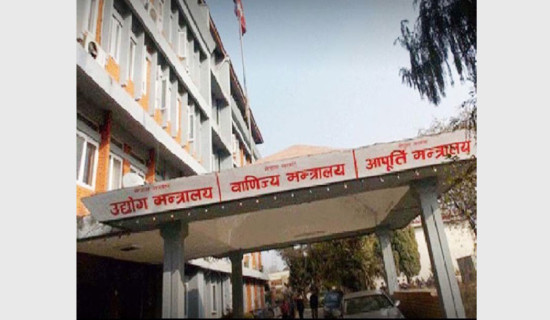- Wednesday, 26 November 2025
Social Media Spur Communicative Action
Dr. Kundan Aryal
As Jürgen Habermas holds that a portion of the public sphere is constituted in every conversation in which private persons come together to form a public, many communication scholars around the world are extending his idea to the sphere of the internet. Recent waves of protest against the violence against women triggered by the posts on social media platforms indicate the emergence of the virtual public sphere in Nepal as well.
The German philosopher, who also propounded the theory of communicative action, defines communication as an activity that constitutes a basic conception of society, the social world or the social-life world. Explaining his idea of communicative competence, he argues that a human being's ability to communicate is relating to the surrounded world, to the subjects, to his or her intentions, feelings and desires. Hence, he concludes that communicative competence is not just a matter of being able to produce grammatical sentences.
Communicative competence
Over a couple of years, Nepali women from different walks of life have come to the street against the widespread sexual and gender-based violence (SGBV) through their enhanced communicative competence. Although there could be several reservations about the functioning of the Social Networking Sites, they have proved to be instrumental in uplifting the communicative competence of Nepali women.
When a girl, raped by a beauty pageant organiser some eight years ago, gathered her courage to disclose sexual brutality meted out to her via a series of video clips, it has shaken the society to the core. The policymakers have been propelled to review the legal provision or statute of limitation regarding the lodging of the case at police office against the sexual offenders. Her emotional revelation lifted the lid on the cases of rape and other forms of sexual violence against minors. Social media sensitised the people from different walks of life against the statute of limitation that has been preventing women and minors from getting justice in many instances.
Section 229 of the Criminal Code states the case must be filed within one year of the incident. The unreasonable time limit of the filing of the case against the sexual offence is said to have given rise to impunity as the victims undergo mental trauma and take months or years to overcome the fear and social stigma before coming to public for justice. Even though the Supreme Court issued an order to remove the statute of limitation, the lawmakers are not seemingly serious about this. However, at least after two decades of public discourse, the parliament has been moved this time and it passed a resolution to this end.
As the practice of reporting the news has been reinvented with the World Wide Web, the feminist movement also has found a new way with the digital platforms. For a better world, internet-based social networks have become an effective way. In juxtaposition to this encouraging scenario, there are expectations from the internet users to be more honest in terms of public interest. Marshall McLuhan, a Canadian scholar, has long ago argued that in every era of communication, from oral to written to the electronic, one form of media has been most influential. This era of mediated communication is dominated by the internet.
On the one hand, the Social Networking Sites have become a platform for strengthening public service and on the other, they are radicalising the audience, spreading disinformation, and even trivialising political dialogue. Roger Parry, a British media practitioner and scholar, describes the internet as a city. Since it is like a big city, there is an expectation that a world wide web should be an extensive public park as well alongside the shopping malls that are subject to function following the logic of commerce. It is a quest from the receivers' side that the internet should serve the public interest.
Ethan Zuckerman, director of the Centre for Civic Media at Massachusetts Institute of Technology, US, argues that a wave of innovation tools that entertain the people and capture their attention for resale to advertisers, but much less innovation tools that educate the people and challenge them to broaden their sphere of exposure, or that amplify marginalised voices. Hence, he holds the idea of digital public service media which would fill a black hole of misinformation. However, his research suggests that social platforms may be increasing political polarisation, straining social ties, and causing us anxiety and depression. He also reiterates that Facebook is criticised for creating echo chambers and “filter bubbles” in which people only encounter content — sometimes inaccurate content — that reinforces their prejudices.
Prerequisites
Nevertheless, the digital platforms are fulfilling three fundamental conditions set by Harbermas as prerequisites of communicative action, such as transferring information, establishing relations with other, and enabling people for expressing themselves. More precisely, social media are characterising communicative action with cognitive, interactive and expressive communication. One key reason why misinformation spreads so rapid and far is that people share it. Such a trend of sharing has both negative and positive implications. But in the case of the recent movement against SGBV in Nepal, sharing of grief and pain of a girl sensitised the entire country including the government and the lawmakers.
Hence, the civilised society would encourage and respond to the sharing of pain, a quest for justice and mutual understanding rather than misinformation or disinformation. The social networking sites are expected to encourage everyone to interact with another despite the fact that they differ on various issues. In other words, the internet will enable everyone to participate in and enrich a public sphere, an area in social life where individuals can come together to freely discuss and identify societal problems, and through that discussions influence political action as envisioned by Habermas.
(Dr. Aryal is associated with the Central Department of Journalism and Mass Communication of Tribhuvan University.)
















